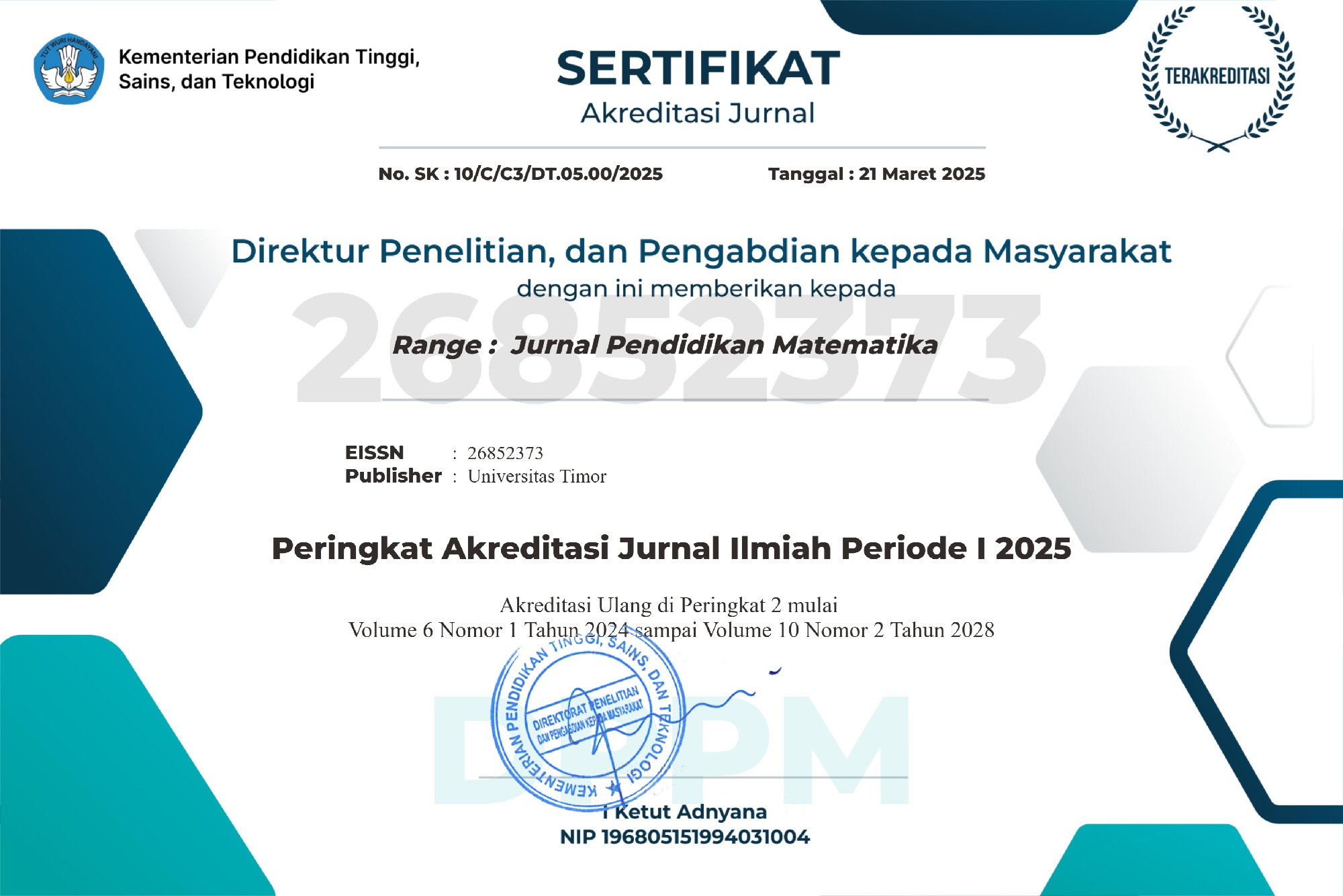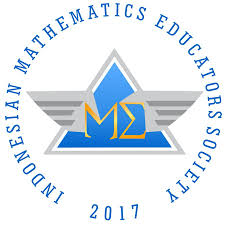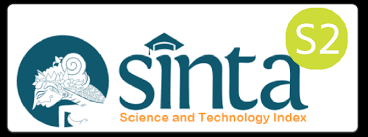Profile of Mathematics Communication Ability of Seventh-Grade Students in Solving Set Problems Based on Cognitive Style
DOI:
https://doi.org/10.32938/jpm.v4i2.3593Keywords:
Cognitive Style, Field-Dependent, Field-Independent, Mathematics Communication AbilityAbstract
This study aims to describe the profile of students' mathematical communication ability in solving set problems in terms of field-dependent and field-independent cognitive styles. This research method includes qualitative descriptive research. In this study, the collected data was in the form of words so that it did not emphasize numbers. Participants in this study consisted of three students with a field-dependent cognitive style and three students with a field-independent cognitive style from class VII at one of the junior high schools in North Central Timor Regency. The instruments used are a mathematical communication ability test, Group Embedded Figure Test, and interviews. The results showed that students with a field-independent cognitive style have high mathematical communication abilities. This can be seen from the test results of the three field-independent students who are able to express mathematical ideas through oral, written, demonstration and describe in visual form, are able to analyze, interpret, and evaluate mathematical ideas through oral, written, and other visual forms, and are able to use terms, mathematical notations, and their structures to present ideas, describe relationships, and situation models when solving problems mathematical sets. Meanwhile, students with a field-dependent cognitive style have low mathematical communication abilities. This can be seen from the results of the mathematics communication ability test of the three field-dependent students who have not been able to meet all the indicators of mathematical communication.
References
Anintya, Y. A., Pujiastuti, E., & Mashuri. (2016). Analisis Kemampuan Komunikasi Matematis Ditinjau dari Gaya Belajar Siswa Kelas VIII pada Model Pembelajaran Resource Based Learning. Unnes Journal of Mathematics Education, 6(1), 37–43.
Baroody, A.J. (1993). Problem-Solving, Reasoning, and Communicating, K-8. Helping Children Think Mathematically. New York. Macmillan Publishing Company.
Duval, R. (2006). A cognitive analysis of problems of comprehension in a learning of mathematics. Educational Studies in Mathematics, 61, 103–131.
Nayan, A. D. (2020). Analisis Kemampuan Komunikasi Matematis Siswa Ditinjau dari Gaya Belajar Siswa. [Doctoral dissertation]. Universitas Islam Negeri Sultan Syarif Kasim Riau.
NCTM. (2000). Principles and Standards for School mathematics. Reston, VA: National Council of Teachers of Mathematics.
Nugraha, M. G, dan Awaliyah S. (2016). Analisis Gaya Kognitif Field Dependent Dan Field Independent Terhadap Penguasaan Konsep Fisika Siswa. Prosiding Seminar Nasional Fisika (E-Journal). V, 71-76.
Nurwijaya, S. (2014). Profil Kemampuan Dan Penalaran Komunikasi Matematika Dalam Pemecahkan Masalah Matematika Sesuai Dengan Gaya Kognitif Dan Gender. Al-Jabar. 6(2), 131-141.
Pratiwi, D. D., Sujadi, I., & Pangadi, P. (2013). Kemampuan Komunikasi Matematis Dalam Pemecahan Masalah Matematika Sesuai Dengan Gaya Kognitif Pada Siswa Kelas IX SMP Negeri 1 Surakarta Tahun Pelajaran 2012/2013. Jurnal Pembelajaran Matematika, 1(5), 525-538.
Ramdani, A.T.S. (2019) Analisis Kemampuan Komunikasi Matematis Siswa Dalam Menyelesaikan Masalah Kontekstual Kelas VII MIPA di SMA Negeri 1 Bone. [Doctoral dissertation]. Universitas Negeri Makasar.
Rahyubi, H. (2012). Teori-Teori Belajar Dan Aplikasi Pembelajaran Motorik. Majalengka: Nusa Media.
Rohmah, N. dan Khabibah, S. (2014). Profil Komunikasi Siswa Dalam Pemecahan Masalah Matematika Ditinjau Dari Gaya Kognitif Dan Jenis Kelamin. Jurnal Ilmiah Pendidikan Matematika. 3 (2), 121-122.
Son, A. L., & Ahzan, Z. N. (2017). Perkuliahan Dengan Model Pembelajaran Jigsaw Berbantuan Media Presentasi Powerpoint Disertai Visual Basic Applications Untuk Meningkatkan Kemampuan Komunikasi Matematis Mahasiswa. Mathline: Jurnal Matematika dan Pendidikan Matematika, 2(2), 109-118.
Son, A. L., & Fatimah, S. (2020). Students' Mathematical Problem-Solving Ability Based on Teaching Models Intervention and Cognitive Style. Journal on Mathematics Education, 11(2), 209-222.
Son, A. L., & Fatimah, S. (2021). The Position of Students'errors in Algebraic Problem-Solving Based on Field Dependent and Independent. Kalamatika: Jurnal Pendidikan Matematika, 6(1), 57-70.
Wahyuni, T. S., Amelia, R., & Maya, R. (2019). Analisis kemampuan komunikasi matematis siswa SMP pada materi segiempat dan segitiga. Jurnal Kajian Pembelajaran Matematika, 3(1), 18-23.
Suherman, E. (2003). Strategi Pembelajaran Matematika Kontemporer. Bandung: Universitas Pendidikan Indonesia.
Suryanti, N. (2014). Pengaruh Gaya Kognitif Terhadap Hasil Belajar Akuntansi Keuangan Menengah 1. Jurnal Ilmiah Akuntansi Dan Humanika, 4(1). 1393-1406
Usodo, B. (2011). Profil Intuisi Mahasiswa Dalam Memecahkan Masalah Matematika Ditinjau Dari Gaya Kognitif Field Dependent. Prosiding Seminar Nasinal Matematika Dan Pendidikan Matematika. UNS. 95-172.
Witkin, A. H. (1971). Group Embedded Figure. California: Mind Garden, Inc.
Downloads
Published
Issue
Section
License
RANGE: Jurnal Pendidikan Matematika















